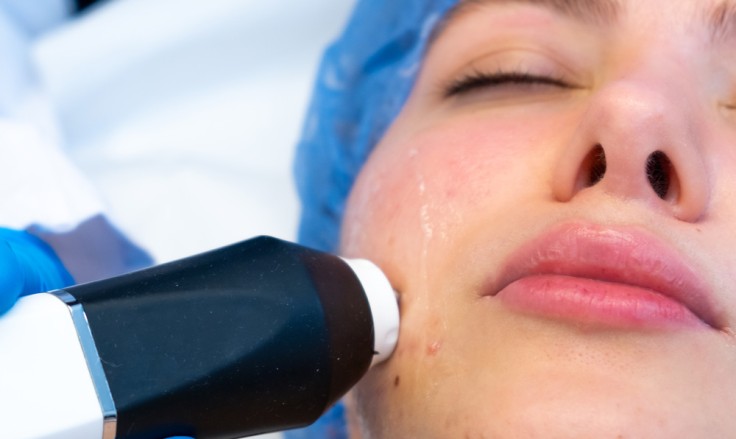Introduction
Healthy skin is not just about appearance but also confidence and overall wellbeing. Creating your own Skin Care routine allows you to take control of your skin’s needs. With countless products and trends, building a simple yet effective system may feel overwhelming.
This article outlines practical steps for designing a Skin Care routine yourself. The routine should focus on balance, consistency, and personalisation.
Skin Care Routine Step 1: Identify Your Skin Type
Every effective routine begins with understanding your skin type. Common categories include oily, dry, combination, sensitive, and normal.
- Oily: Shiny skin with enlarged pores, prone to breakouts.
- Dry: Tightness, roughness, and flaking.
- Combination: Oily in some areas, dry in others.
- Sensitive: Easily irritated, prone to redness.
- Normal: Balanced, with few concerns.
Knowing your type ensures products support your skin instead of disrupting it.
Skin Care Routine Step 2: Start with Cleansing
Cleansing is the foundation of any good routine. Dirt, oil, and pollutants build up. A gentle cleanser removes impurities without stripping natural oils.
Morning cleansing refreshes skin, while evening cleansing removes makeup and residue. Double cleansing involves an oil-based followed by a water-based cleanser. It is very popular for makeup wearers for a deeper cleanse. Avoid harsh soaps, as they disrupt balance and cause dryness.
Skin Care Routine Step 3: Introduce Toning
Toner prepares your skin for the next steps. Modern toners are hydrating and balancing rather than harsh. They restore pH levels, remove leftover residue, and add light hydration.
Ingredients like hyaluronic acid, rose water, or niacinamide offer soothing benefits. Apply toner with a cotton pad or gently pat it on with your hands. Incorporating this step enhances absorption of serums and moisturisers in your Skin Care routine.

Skin Care Routine Step 4: Target Concerns with Serums
Serums deliver concentrated ingredients to address specific skin issues. They absorb quickly and penetrate deeper than creams.
Popular options include vitamin C for brightening, hyaluronic acid for hydration, and retinol for anti-ageing. Choose serums based on your goals, such as reducing pigmentation or softening fine lines. Using serums consistently makes your results more noticeable and personalised.
Skin Care Routine Step 5: Moisturising for Balance
Moisturiser locks in hydration and supports the skin barrier. Oily skin types benefit from lightweight, gel-based formulas. Dry skin often needs richer creams with ceramides or shea butter.
Even combination and sensitive skin require moisturising to maintain balance. Skipping this step leaves skin vulnerable to dehydration and irritation. Including the right moisturiser ensures your Skin Care routine supports overall health and resilience.
Skin Care Routine Step 6: Protect with Sunscreen
Sunscreen is the most important product in any routine. UV exposure causes premature ageing, pigmentation, and damage. Daily use prevents wrinkles and reduces risks of long-term concerns.
Broad-spectrum SPF 30 or higher is recommended. Apply generously every morning and reapply if outdoors for extended periods. Sunscreen complements every other step by protecting improvements achieved through consistent care.
Adjusting Your Skin Care Routine for Day and Night
Daytime routines should focus on protection and hydration. Lightweight serums and sunscreen work well in the morning. Night-time routines allow for repair. Ingredients like retinol, peptides, or richer moisturisers are best before bed.
One tip is to split your routine into day and night versions. This ensures your skin gets both defence and recovery. This balance maintains a healthier appearance over time.
Weekly Additions for Extra Care
Beyond daily steps, weekly treatments can enhance your Skin Care routine. Exfoliation removes dead cells, promoting smooth texture. Use chemical exfoliants like AHAs or BHAs once or twice a week.
Masks also provide targeted care. Clay masks absorb oil, while hydrating masks restore moisture. Tailoring these treatments ensures your skin receives occasional boosts without overwhelming it.
Conclusion
Designing your Skin Care routine is about balance, patience, and personalisation. By identifying your skin type and choosing suitable products, you can achieve lasting improvements.
Consistency across cleansing, hydrating, protecting, and supporting skin health ensures visible results. For many, this process is empowering, offering control and confidence.
For more information and to book a consultation visit the ACIBADEM Beauty Center Skin Care webpage.
Frequently Asked Questions
Sunscreen, as it prevents long-term damage and ageing.
Most people see improvements within six to eight weeks.
No, one to two times per week is usually enough.
Yes, skin often needs richer hydration in winter and lighter formulas in summer.
Not always. Consistency and choosing the right ingredients matter most.













